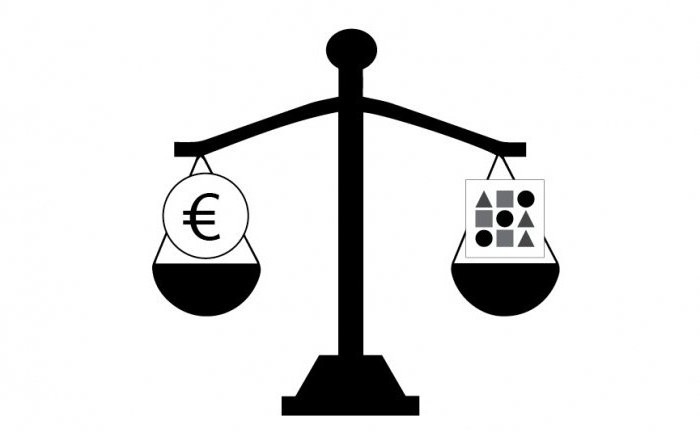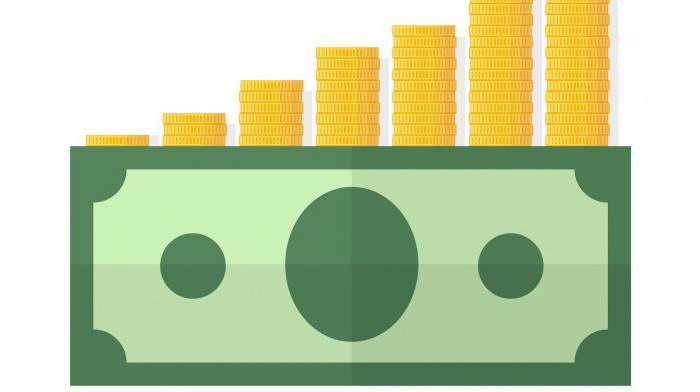The breakeven point can display the minimum quantity of products that must be manufactured so that the company can cover all its costs and go to zero. And also this indicator can be presented in monetary terms. In this case, the breakeven point is called the profitability threshold.
The essence of the term
Sometimes called the threshold of profitability threshold revenue. This name is used only in those situations when the indicator is calculated on the basis of the margin coefficient and shows the amount of income that the enterprise needs to cover all its costs incurred in the production and sale of products.

Also, the margin of profitability shows the price at which the sale of goods is able to cover all costs. There are several ways to do this.
Profitability Threshold Components
In order to calculate the indicator, you must first calculate a number of other indicators. First, you should determine the size and coefficient of marginal profit. You also need to find separately the amount of fixed costs and variable costs, as well as their total amount.
In addition to these indicators, indicators such as by-products in monetary terms and the total volume of main products sold in physical units take part in calculating the profitability threshold.

By-products and main products
The by-product and main products are very closely related. The first may occur during the production of the second. These two types of products together comprise the company's revenue. Their calculation is as follows:
- PO (PP) = C * K, where
PO - main products;
PP - by-products;
C is the price of the main / by-product;
K is the volume of sales of the main / by-products.

An example of a major product may be wheat. During all the processes associated with its sowing and harvesting, waste remains on the field - hay. It is a by-product and can also be sold for a price. The amount of income received from the sale of hay is called revenue from the sale of by-products or by-products in monetary terms. Money received from the sale of wheat is called the main income of the enterprise.
Fixed and variable costs
Fixed costs include all costs, the size of which does not depend on the volume of production. This is the salary of management personnel, depreciation, etc.
When calculating the profitability threshold, an indicator such as variable costs is also needed. Unlike fixed costs, variables depend on the volume of output. These include: the salary of the production personnel of the enterprise, raw materials, electricity, etc. There are also such concepts as simple variable costs, variable costs 1, variable costs 2 and variable costs 3.

Simple variable costs do not include salaries, fees for land and for the use of working capital. They consist of the cost of raw materials, services provided by third parties, as well as the cost of fuels and lubricants.
Variable costs 1 are calculated as the sum of simple variable costs and the cost of using capital. Variable costs 2 is the sum of variable costs 1 and labor costs.And variable costs 3, which are called total variable costs, is the sum of variable costs 2 and the cost of paying land rent.
Marginal revenue and its ratio
Marginal (marginal) income is considered part of the revenue that remains after deducting all variable costs. Like costs, marginal revenue is divided into four types:
- Marginal income - the difference between revenue and simple variable costs;
- Marginal income 1 - the difference between simple marginal income and the cost of using working capital;
- Marginal income 2 - the difference between marginal income 1 and labor costs;
- Marginal income 3 - the difference between marginal income 2 and the cost of renting land.
The ratio of the amount of marginal revenue to revenue is called the margin income ratio. This index is very popular in cost analysis. Many factors can influence the value of a coefficient. The most common reasons for changing the margin revenue ratio are the following:
- Fluctuation in sales prices.
- Unstable price of raw materials.
- Fluctuation of average variable costs (calculated as the ratio of total variable costs to the number of products produced).
- Change in the structure of sales of products (the beginning of the sale of more or less liquid goods).
Profitability Threshold Calculation
After the methodology for calculating all the constituent elements of the threshold has become known, you can begin the procedure itself. The calculation is to determine the threshold for profitability as revenue from sales.
- PR = OI / KMD, where
PR - the threshold of profitability;
OI - the total amount of all costs (variable costs 3 + fixed costs);
KMD - margin revenue ratio.
The value obtained in this calculation shows what the minimum amount of revenue must be earned by the company so that it can cover all its costs.

The difference between revenue and profitability threshold shows the financial result of the economic entity. In the event that the income received by the enterprise is less than the threshold revenue, the company will incur losses. The excess of sales revenue over the threshold of profitability means that the company makes a profit.
Other types of calculation
There are other methods for calculating the profitability threshold. One popular way to calculate your profitability threshold is to determine a threshold price. This method is often used by German family farm owners.
- PR = (OI - PP) / K, where
PR - the threshold of profitability;
OI - total costs;
PP - by-products in monetary terms;
K is the amount of production.

There is a second way to calculate the profitability threshold.
- PR = C - (P / C), where
PR - the threshold of profitability;
C is the price of the product;
P - profit;
To - the number of products sold.
Part of the “P / C” formula shows how much you can reduce (increase in case of loss) the price so that the company can cover all costs by selling goods.
Production threshold
The threshold of production is an indicator that displays the price, the implementation of which will make it possible to cover production variable costs. Since variable costs are divided into four types, there can also be four production thresholds.
- PP = (PI - Po.P.) / K, where
PP - production threshold;
PI - variable costs;
Pob P. - by-products in monetary terms;
To - the number of products.
Using this formula, you can calculate the price, which makes it possible to cover variable costs.
- PP 1 = (PI 1 - Pob. P.) / K, where
PP 1 - production threshold 1;
PI 1 - variable costs 1;
Pob P. - by-products in monetary terms;
To - the number of products.
If a company sells its products at a price calculated using the production threshold formula 1, it will be able to cover simple variable costs and the cost of using working capital.
- PP 2 = (PI 2 - Pob. P.) / K, where
PP 2 - production threshold 2;
PI 2 - variable costs 2;
Pob P. - by-products in monetary terms;
To - the number of products.
When sold at a price calculated by the formula for the threshold of production 2, the company is able to cover its variable costs 1, as well as the cost of wages.
- PP 3 = (PI 3 - Pob. P.) / K, where
PP 3 - production threshold 3;
PI 3 - variable costs 3;
Pob P. - by-products in monetary terms;
To - the number of products.

The last formula shows what the minimum price for the company's products should be so that it can cover all its variable costs.
Thus, the margin of profitability is an indicator that characterizes the minimum price or minimum revenue of a company, which allows you to cover all costs.